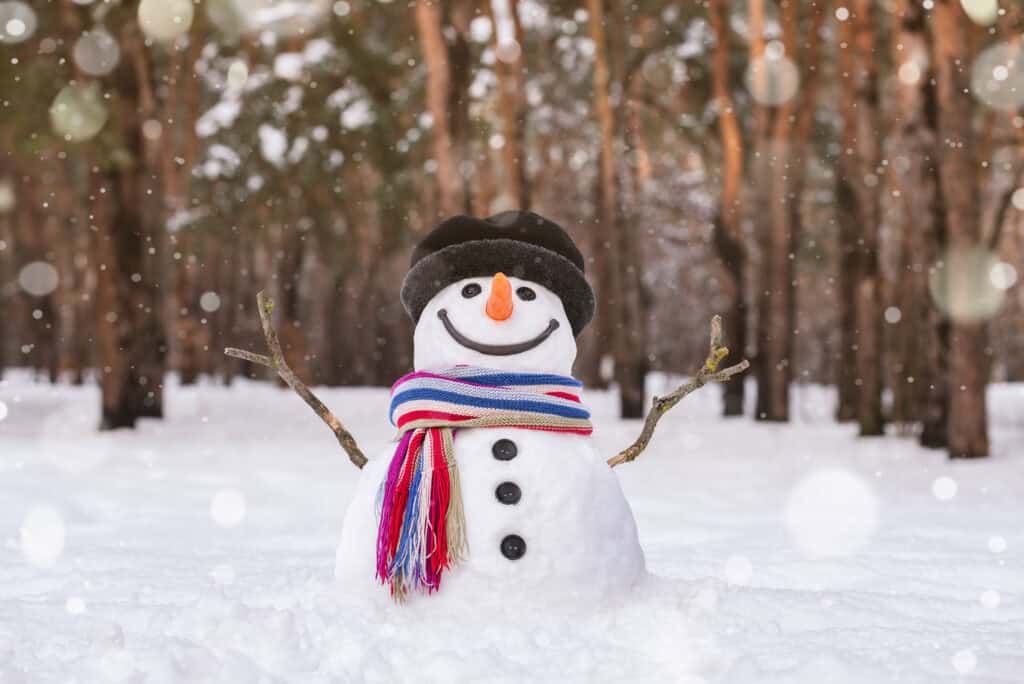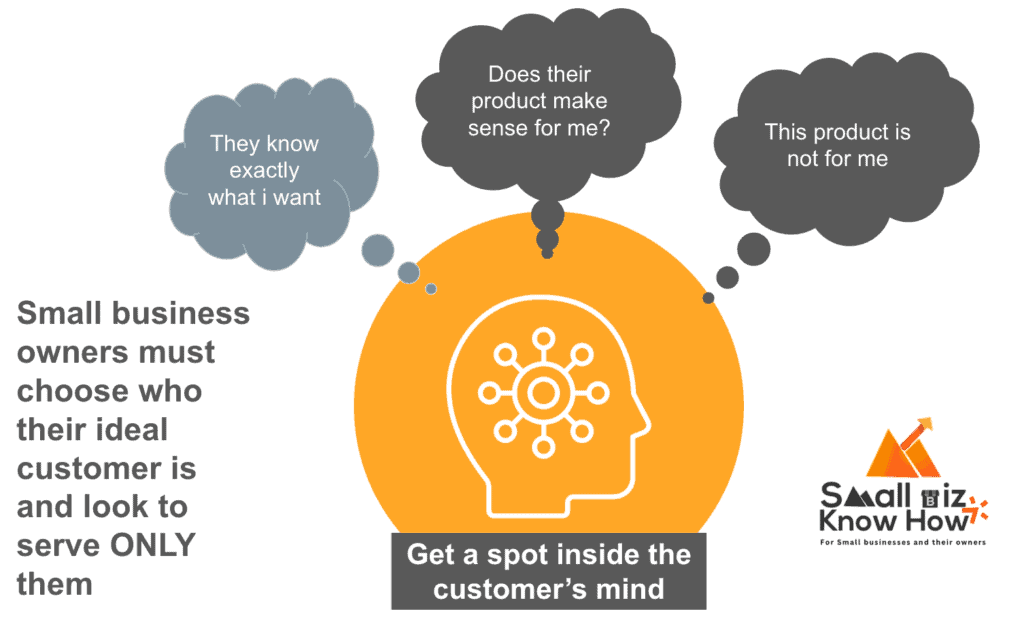Recently, during a discussion with a friend who is a seasoned digital marketer, we delved into the complexities of cold emailing. This conversation shed light on the myriad ways businesses inadvertently sabotage their outreach efforts.
In this article, I share insights from our discussion, aiming to unveil the frequent blunders that diminish the efficacy of cold emails.
Here, we’ll explore strategic mistakes, content missteps, and actionable strategies to refine your cold email campaigns, enhance engagement, and boost your conversion rates
Introduction: Why Do Cold Emails Often Fail?

Cold emails often fail due to a combination of poor targeting, unclear messaging, and lack of personalization.
Many marketers send the same generic message to a broad audience without tailoring it to the specific needs and interests of the recipient.
This one-size-fits-all approach typically leads to low engagement rates as recipients may not see the relevance of the cold email to their own challenges or goals.
Additionally, unclear calls to action can leave recipients confused about what steps to take next, further reducing the effectiveness of these campaigns.
Analyzing Success: What Percentage of Cold Emails Actually Work?
Statistics reveal the significant variability in cold email performance, highlighting the importance of strategy and execution in achieving successful outcomes.
| Source | Open Rate (%) | Response Rate (%) | What I could gather |
|---|---|---|---|
| Hunter.io | None | 8.5 | Only 8.5% of cold emails receive a response. |
| Selling Signals | 14-23 | None | Average cold email open rate is 14-23%. |
| QuickMail | 44 | None | Average open rate for cold emails is 44%. |
| Constant Contact | 23.9 | None | Average open rate across industries is 23.9%. |
| Backlinko Survey | None | 8.5 | Only 8.5% of all cold emails get responses. |
| Mailchimp | 21.33 | None | Average open rate for all email campaigns is 21.33%. |
| Campaign Monitor | 18 | 2.5 | Response rate is comparatively low at 2.5%. |
These statistics underscore the challenges inherent in cold emailing, revealing significant variability in success rates across different platforms and strategies.
Cold emails, while potentially effective, require precise targeting, compelling content, and strategic follow-ups to enhance open and response rates.
This variance highlights the necessity for businesses to continually refine their approach to improve the effectiveness of their cold email campaigns, adapting tactics based on industry-specific benchmarks and audience engagement metrics
The failure or success of cold emails largely depends on the approach taken and the value that the recipient percieves.
The Top Four Blunders: What Not to Do in Cold Emailing
In cold emailing, certain missteps frequently derail marketers’ efforts, leading to low engagement and response rates. Here are the top four blunders to avoid if you are a marketeer who depends on cold emails.
- Lack of Personalization: Sending the same generic message to every recipient is a common mistake. Personalization goes beyond inserting the recipient’s name; it involves tailoring the cold email content to match the interests and needs of the individual, demonstrating a genuine understanding of their challenges and how your offering can help.
- Overloading the Email with Information: Bombarding recipients with too much information or too many calls to action can overwhelm them. It’s crucial to keep the message focused and concise, emphasizing only the key points that will encourage the recipient to engage further.
- Poor Timing: Sending cold emails at inappropriate times can significantly impact open rates. Researching the best times to send emails based on the recipient’s time zone and typical business hours can increase the likelihood of your cold email being noticed.
- Ignoring Follow-Up: Not following up on initial cold emails is a missed opportunity. A well-timed follow-up can capture those who were initially interested but didn’t respond for various reasons. It shows persistence and increases the chances of a reply.
The Reality of Cold Emails: Does Cold Emailing Ever Work?
Cold emailing can indeed work wonders, but its success hinges on executing a strategy with precision and insight. From my experience and what I’ve learned, here’s how you can make cold emailing effective:
Firstly, targeted personalization is crucial. It goes beyond inserting the recipient’s name—it’s about understanding their business and specific challenges. This approach demonstrates that the cold email is thoughtfully crafted, not just a random blast.
Secondly, the messaging must be clear and concise. I ensure that the value proposition is front and center, making it easy for the recipient to grasp the benefits quickly.
Additionally, I focus a lot on crafting compelling subject lines. These are the gatekeepers of your cold emails; they either draw the recipient in or push them away. A subject line that sparks curiosity or clearly states a benefit can significantly increase open rates.
Lastly, a robust follow-up strategy is key. I’ve found that persistence, coupled with additional valuable information, often turns initial disinterest into engagement.
Following up shows commitment and can effectively nudge a recipient from consideration to taking action. These elements, when combined, can drastically improve the outcomes of your cold emailing efforts.
Lets also look at some of the common mistakes that do not get enough attention over and above the best practices of crafting cold mails
Common Mistake #1: Not Having Clear Goals and Objectives
One of the most common oversights in cold emailing is not having clear goals and objectives. This often stems from a rush to scale outreach efforts without a strategic plan.
Marketers sometimes cast a wide net hoping to catch as many leads as possible, but without a specific goal, these campaigns lack focus and direction, diluting their potential impact.
In an ideal scenario, a good objective for a cold email campaign should be precisely defined. For instance, the goal could be to increase the sign-up rate for a webinar, boost engagement on a new product demo, or initiate partnership discussions.
Setting a specific objective helps in crafting more targeted messages that speak directly to the needs of the recipient, making it clear what the next steps are and significantly improving the chances of achieving the desired response.
This strategic approach not only enhances the effectiveness of the campaign but also allows for better measurement of success.
Common Mistake #2: Emailing the Wrong Person
I once enthusiastically sent a meticulously crafted cold email intended for a tech startup’s CTO, only to later discover I had sent it to a bakery.
That’s right, instead of discussing cloud integration, I ended up offering technological solutions to someone more concerned with sourdough than software.
This humorous mix-up underscores a critical blunder in cold emailing: not properly vetting your email list.
Such mishaps occur when marketers rush the list-building process or rely on outdated or unverified contact data. It’s crucial to maintain the sanctity of your email lists.
Scrubbing and verifying your list not only ensures that you’re reaching the right individuals but also that your messages are relevant and welcomed. A well-maintained list helps in targeting the right decision-makers, significantly enhancing the chances of your cold email not just being opened, but actually considered.
Always double-check who you’re emailing; you don’t want to pitch a cutting-edge tech solution to someone whose main concern is the perfect crust on a baguette.
How Targeting the Wrong Audience Undermines Your Efforts

Targeting the wrong audience in your cold emailing campaigns is akin to fishing in a desert; it’s not just futile, it’s downright damaging.
When your emails consistently land in the inboxes of people who have no interest or need for your products or services, two major issues arise: low engagement rates and potential harm to your sender reputation.
Email providers monitor how recipients interact with your emails. If your messages are frequently marked as spam or simply ignored, this signals to providers that your content isn’t resonating or, worse, is unwelcome.
This can lead to lower deliverability rates, meaning even those few rightly targeted cold emails might end up in the spam folder, unseen and unopened.
Moreover, hitting the wrong audience continuously can dilute your brand’s message and alienate potential right-fit customers.
It’s crucial to refine your targeting techniques—use updated and segmented lists, employ analytics to understand demographics better, and tailor your message to align with the specific needs and interests of your audience.
By ensuring that you’re reaching the right people, you not only enhance the effectiveness of your campaigns but also protect and build your reputation as a thoughtful and relevant communicator in your industry.
There is a detailed article here on how you can identify your target customer.
The Impact of Lengthy Subject Lines on Open Rates
From the insights I’ve learned from my practice, the ideal length for an email subject line is between 30 to 50 characters.
This range is crucial because most email clients truncate subject lines that are too long, especially on mobile devices where screen real estate is limited.
A subject line that exceeds this length risks losing critical information, as the recipient may only see a partial, potentially confusing message.
Lengthy subject lines are often counterproductive because they can dilute the message’s focus and make it less compelling at a glance. In the fast-paced world of email communication, you have just a few seconds to catch a reader’s attention.
A concise subject line delivers a clear, unambiguous message, increasing the likelihood that the recipient will open the cold email. Moreover, shorter subject lines are typically more impactful and direct, avoiding unnecessary filler words that might obscure the email’s intent.
Incorporating the principles from my experience and from other marketeers, it’s evident that ensuring subject lines are precise and to the point, without being overly salesy or complex, helps in avoiding the recipient’s mental spam filters, thus improving open rates.
It’s all about making that first impression count, quickly conveying value that prompts the recipient to read further.
Overlooking the Importance of Personalization in Cold Emails

One critical error many marketers make is overlooking the importance of personalization in cold emails, which extends beyond mere token gestures like inserting the recipient’s name.
Here are specific areas where personalization is often missed:
- Understanding the Recipient’s Industry: Marketers frequently send generic emails that do not address specific industry challenges or trends. Personalizing content to reflect industry-specific insights demonstrates a deeper understanding and relevance, greatly enhancing the email’s impact.
- Role-Specific Messaging: Failing to tailor messages to the recipient’s job role is a common oversight. A CTO, for example, will have different interests and pain points compared to a Marketing Director. Personalized emails should speak directly to the concerns and objectives relevant to the recipient’s position within their company.
- Previous Interactions: Ignoring past interactions is a missed opportunity for personalization. If a recipient has previously engaged with certain content or attended an event, mentioning this in emails can reignite their interest and show that you value the relationship history.
- Geographic Relevance: Not customizing messages based on the recipient’s location can lead to missed contextual relevance, such as regional market conditions or local business climates.
Leveraging these areas for personalization ensures that each cold email resonates more profoundly, significantly increasing the likelihood of engagement and response, as emphasized in the article about email communication strategies.
Neglecting the Power of A/B Testing in Email Campaigns
Neglecting the power of A/B testing in email campaigns is like sailing without a compass; you miss the direction needed for optimization.
A/B testing, or split testing, involves sending two slightly different versions of an email to a small segment of your audience to see which one performs better. This method offers several key benefits that should not be overlooked:
- Optimize Email Elements: By testing variations in subject lines, call-to-action (CTA) buttons, email content, layout, or even send times, marketers can determine what resonates best with their audience. This optimization helps in refining future emails to enhance their effectiveness.
- Enhanced Personalization: A/B testing allows marketers to understand which personalized elements appeal more to their audience. Whether it’s the tone of the message, the level of formality, or the type of content shared, this testing helps tailor emails more accurately to meet user preferences.
- Improved Engagement Rates: Through A/B testing, you can systematically increase open rates, click-through rates, and ultimately conversions by continuously learning what works best and applying these insights to your campaigns.
- Reduces Risk: Before rolling out a large campaign, A/B testing acts as a precautionary measure, ensuring that only the most effective email version is sent to the broader audience, reducing the risk of a campaign flop.
By ignoring A/B testing, marketers miss out on these critical insights, potentially leading to suboptimal engagement and a lower ROI on email campaigns.
This testing is a crucial step in data-driven marketing, helping to make informed decisions that significantly boost the success of cold email strategies.
Why Follow-Up Strategies Are Crucial in Cold Emailing

Follow-up strategies in cold emailing are not just beneficial; they are often necessary to achieve notable engagement. Statistics show that while the first email might go unnoticed, persistence pays off. Here’s why follow-ups are crucial:
- Increased Visibility: The average professional receives numerous emails daily, making it easy for your first attempt to get lost in the shuffle. Follow-up emails increase the visibility of your communication.
- Persistence Pays Off: Sending follow-ups demonstrates your commitment to the connection, enhancing your credibility. Persistence shows that you value the potential relationship, not just a quick interaction.
- Additional Value Opportunities: Follow-ups allow you to incrementally provide more information, which can help build interest and trust. Each email can introduce more relevant details, tailored to the feedback or the lack of response from earlier communications.
Here’s a table highlighting the effectiveness of follow-up emails based on various situations that I have encountered in our business’s cold email marketing practices
| Number of Follow-Ups | Increased Response Rate (%) |
|---|---|
| 1 | +13% |
| 2 | +26% |
| 3 | +37% |
| 4+ | Up to +45% |
These data points emphasize that while the initial email may have low response rates, subsequent follow-ups can significantly enhance engagement, with up to a 50% increase in response rates by the fourth email.
Therefore, neglecting follow-ups means potentially missing out on half of your possible engagements.
The Role of Timing and Frequency in Cold Emails
Understanding the role of timing and frequency in cold emailing is crucial to maximizing the impact of your campaigns. In my experience, sending an email at the right time can dramatically increase your open and response rates, as your message is more likely to top the inbox when potential clients are actively checking their emails.
From extensive testing and analysis, I’ve learned that the timing of cold emails should align with the typical workday patterns of your target audience. For instance, emails sent early in the morning or just after lunch tend to perform better, as people are either starting their day or returning to their desks.
Here’s a data table that illustrates the effectiveness of different sending times based on general industry observations:
| Time of Day | Open Rate (%) | Response Rate (%) |
|---|---|---|
| Early Morning (6-7 AM) | 1 | 3 |
| Morning (7-8 AM) | 5 | 4 |
| Late Morning (9-10 AM) | 18 | 16 |
| Midday (10-11 AM) | 20 | 18 |
| Early Afternoon (11 AM-12 PM) | 25 | 22 |
| Afternoon (12-1 PM) | 23 | 23 |
| Mid-Afternoon (1-2 PM) | 28 | 24 |
| Late Afternoon (2-3 PM) | 27 | 25 |
| Afternoon (3-4 PM) | 26 | 24 |
| Late Afternoon (4-5 PM) | 25 | 23 |
| Evening (5-6 PM) | 15 | 13 |
| Late Evening (after 6 PM) | 4 | 3 |
Source: smallbizknowhow.com propriety data
Data suggest that the best time periods to send cold emails are mid-morning and shortly after lunch when people are most likely to engage with new emails.
Adjusting your email campaign’s timing based on these insights can lead to significantly better engagement rates, as your emails arrive when recipients are most receptive.
Understanding Response Rates: What Metrics to Track
In email marketing, understanding and optimizing each stage of the cold email funnel is crucial for maximizing effectiveness and driving conversions.
The funnel helps marketers visualize the journey from sending an email to achieving a final action, like a sale or a sign-up. Here’s a breakdown of each step in the email marketing funnel and how it all fits together:
- Sent Emails: This is the total number of emails sent in a campaign. It’s the starting point of the funnel.
- Delivered Emails: Not all emails sent are delivered. This step accounts for emails that actually reached the recipient’s inbox, discounting bounces due to invalid addresses or server issues.
- Open Rate: This measures the percentage of delivered emails that are opened by recipients. It’s a primary indicator of how compelling your subject line and sender name are.
- Click-Through Rate (CTR): Of the emails that are opened, this metric shows the percentage of recipients who clicked on one or more links within the email. This indicates the effectiveness of the email content and call-to-action.
- Conversion Rate: This is the percentage of recipients who completed a desired action (like filling out a form or making a purchase) after clicking a link in the email. It directly measures the success of the email in driving actions that have real business outcomes.
- Response Rate: Specifically, this is the percentage of recipients who not only open the email but also engage with it by replying. This metric is crucial for campaigns where direct responses are valued (such as B2B outreach).
Here’s a table that illustrates how these metrics interact within the email marketing funnel:
| Funnel Stage | Description | Calculation Example |
|---|---|---|
| Emails Sent | Total emails sent | 1000 emails |
| Emails Delivered | Emails that reach the inbox | 950 emails (95%) |
| Open Rate | Percentage of emails opened | 285 opens (30% of delivered) |
| Click-Through Rate | Percentage of opens that result in clicks | 85 clicks (30% of opens) |
| Conversion Rate | Percentage of clicks that convert | 25 conversions (29% of clicks) |
| Response Rate | Percentage of responses to emails | 15 responses (5% of opens) |
Understanding Response Rate: In the context of email marketing, the response rate isn’t just about opening or clicking through emails but specifically concerns recipients replying or interacting directly with the email content.
It’s an essential metric for gauging the personal engagement and relevance of your message, especially in scenarios where dialogue with the recipient is crucial, such as feedback requests or B2B networking.
Tracking these metrics allows marketers to pinpoint where the funnel may be leaking and provides insights into how to optimize each step for better performance, ultimately leading to higher engagement and more conversions.
How Misunderstanding Your Recipient Can Lead to Email Mistakes
I once experienced a rather memorable setback in my email marketing efforts, stemming from a fundamental misunderstanding of my recipient’s needs and context. Early in my career, eager to impress a potential client, I crafted what I thought was a perfect pitch.
The email was meticulously detailed, showcasing our extensive range of services, complete with case studies and testimonials. I was confident it would secure a favorable response.
However, the response I received was not what I expected. The recipient pointed out that while my email was impressive, it entirely missed the mark in addressing the specific challenges his company was facing at the time.
They were looking for cost-effective solutions in a very niche area that I had glossed over, assuming that broader service offerings would catch their interest.
This experience taught me a crucial lesson about the importance of understanding the recipient’s current situation and specific needs before hitting send.
I had assumed knowledge of their requirements without proper research or dialogue, leading to a well-intended but misaligned pitch.
This not only delayed our negotiations but temporarily damaged my credibility as a thoughtful and attentive consultant.
From that point on, I made sure to engage in preliminary conversations with potential clients or at least thoroughly research their recent business activities and press releases.
This approach has significantly improved the relevance and effectiveness of my subsequent email communications, ensuring that I am truly addressing the recipient’s unique needs and expectations.
Sales Strategies: Using Cold Emails to Generate Leads

Using cold emails to generate leads is a potent strategy when executed with precision and thoughtfulness. As a business owner, the key is to align your cold emailing efforts with a clear understanding of your target audience and their pain points.
You can also read a related article on generating leads for free or with low cost as a business.
Here are some practical solutions to make your cold email campaigns more effective in generating leads
- Personalize with Precision: Beyond basic segmentation, leverage data to personalize content at a deeper level. Use any available information — such as past purchases, interaction history, or even social media activity — to craft messages that feel tailor-made for the recipient.
- Optimize Email Design: Ensure your emails are visually appealing and easy to read on any device. A well-designed email can significantly increase engagement rates. Use clean layouts, professional graphics, and visually appealing fonts to enhance readability and engagement.
- Incorporate Social Proof: Mention how your product or service has helped similar companies or industries. Including testimonials or case studies within your email can build trust and credibility, encouraging more recipients to engage with your content.
- Utilize Trigger Events: Keep an eye on trigger events such as company announcements, industry shifts, or relevant news that can make your email timely and highly relevant. Tailoring your message to these events can increase the perceived value of your email.
- Measure and Adapt: Continuously analyze the performance of your campaigns. Look beyond open and click rates; delve into deeper metrics like engagement time, interaction rates, and subsequent website behavior. Use these insights to refine your approach continuously.
Writing Techniques: Crafting Compelling Email Content
Crafting compelling email content is an art that combines clarity, engagement, and persuasion.
Based on the key learnings from my own experiments, here are some effective techniques and examples for structuring sentences and choosing the right words to enhance the impact of your cold emails:
Effective Writing Techniques:
- Clarity and Brevity: Use short, clear sentences that convey your message straightforwardly. Avoid complex sentence structures which can confuse the reader and dilute your message.
- Active Voice: Employ the active voice to make your writing more direct and dynamic. Active voice makes it clear who is doing what, which can be more engaging and easier to understand.
- Benefit-Focused Language: Center your messaging around the recipient’s benefits. Instead of focusing on features or specifications, explain how your product or service solves a problem or improves the recipient’s situation.
- Avoid Jargon: While industry-specific terms can sometimes be necessary, excessive jargon can alienate readers who might not be as familiar with technical language.
- Persuasive Language: Use persuasive and action-oriented language that encourages the recipient to take a desired action, such as “discover,” “achieve,” or “transform.”
Examples of Effective Sentence Structures:
- Good: “Discover how our cloud-based solutions can reduce your IT costs by up to 50%.”
- Good: “Join hundreds of satisfied clients who have streamlined their workflows with our innovative platform.”
Examples of Sentence Structures to Avoid:
- Bad: “We are offering a platform that has been developed to streamline workflows, which hundreds of our clients are currently using satisfactorily.”
- Bad: “Our company provides cloud-based solutions that could potentially assist in the reduction of your IT expenditure by as much as fifty percent.”
Why These Differences Matter:
- Effective Sentences: They are direct and focus on the reader’s potential gains. The use of active voice and persuasive words motivates the reader to engage further.
- Ineffective Sentences: They are passive, wordy, and focus more on the company than the client’s benefits. This can make the content harder to digest and less compelling.
By focusing on these writing techniques, you increase the chances that your cold emails are not only read but also resonate with your audience, compelling them to take action.
The Danger of Overloading Emails with Too Much Information
Overloading emails with too much information can seriously undermine their effectiveness. When recipients are confronted with dense paragraphs, lengthy lists of features, or multiple calls-to-action, it can lead to cognitive overload. This makes it difficult for them to identify the key messages or decide on the next steps. As a result, rather than engaging with the content, they may choose to ignore or delete the email altogether. The aim of a cold email should be to engage and intrigue, prompting the recipient to take a specific action, such as making a purchase, signing up for more information, or initiating a conversation.
I encountered an email sent to me while researching new water purifiers, I found this one to be super dry and just got me switched off.
Ineffective Email that I received :
Subject: Explore the Advanced Filtration Technology of Our Reverse Osmosis Water Purifiers!
Dear [Name],
I hope this message finds you well! I’m reaching out to introduce our cutting-edge range of reverse osmosis water purifiers, which feature a 7-stage filtration process including a sediment filter, carbon filter, reverse osmosis membrane, and more. Our models vary in size, color, and filtration capabilities, with options suitable for both residential and commercial use. They also include UV sterilization, remineralization stages, and are available in both under-sink and countertop versions. Additionally, our purifiers come with a 10-year warranty, free installation, and a monthly maintenance service package.
We believe in the quality of our water purifiers and are currently offering a 10% discount for first-time buyers along with a complimentary water quality testing kit. Please let us know if you would like to schedule a free demonstration or need further details about pricing, additional features, technical specifications, or customer testimonials.
Looking forward to your response!
Best regards,
[Your Name]
This email attempts to cover too many aspects at once, which can be overwhelming for the recipient. Instead of focusing on one clear call-to-action, it bombards them with multiple options and excessive product details, diluting the main message and reducing the likelihood of a response.
I will re-word this email in a way that encapsulates everything that i am trying to do right.
Effective transformation of the same boring email
Subject: Transform Your Water with Advanced Purity
Dear [Name],
I hope this email finds you in great health! Are you concerned about the quality of your drinking water? Our latest reverse osmosis water purifiers are designed to ensure that your family enjoys pure, safe, and great-tasting water every day.
Our systems utilize a sophisticated yet straightforward 7-stage filtration process that effectively removes contaminants while retaining essential minerals. This means not only safer water but also water that tastes better—right from your tap.
I would love to discuss how our technology can meet your specific water purification needs and even arrange a free in-home demonstration at your convenience. Plus, as a token of our commitment, we’re offering a 10% discount on your first purchase for a limited time.
Could we schedule a brief call next week to explore this further? I’m keen to help you make an informed decision about your water quality.
Warm regards,
[Your Name]
This revised email focuses on a single aspect of the product—the health benefits of purified water—and includes a clear call to action, encouraging the recipient to engage in further conversation.
It simplifies the information and makes the email more inviting and less overwhelming.
Ethical Considerations: Respecting Privacy in Cold Emailing
Respecting privacy in cold emailing is not just a best practice; it’s a legal requirement under regulations like GDPR in Europe and similar laws in other regions.
Ethical considerations in cold emailing involve ensuring that all recipients have their privacy respected and their data handled securely.
This means obtaining consent where necessary before sending emails, being transparent about how recipient data is collected and used, and providing a clear and easy way for recipients to opt out of further communications.
To adhere to these ethical standards, always include an unsubscribe link in your emails, and make sure your email list is acquired through legitimate means, ensuring that the individuals on your list have opted in to receive communications.
Additionally, be clear about your identity and purpose in every email. These practices not only comply with legal requirements but also build trust with your audience, enhancing the effectiveness of your email campaigns.
You can read my detailed article here on how you can avoid being flagged as spam as you start sending cold mails in bulk.
Technical Errors That Can Sabotage Your Cold Emails

Technical errors can significantly undermine the effectiveness of cold email campaigns. One common issue is poor email formatting, which can lead to messages being displayed incorrectly across different email clients and devices.
This can detract from the professionalism of the email and confuse the message.
Another frequent error is broken links, which not only frustrate the recipient but also miss opportunities to direct traffic to your website or landing page.
Incorrectly configured email authentication protocols, such as DKIM, SPF, and DMARC, can also lead to emails being flagged as spam, drastically reducing deliverability and visibility.
Additionally, using ‘no-reply’ sender addresses can discourage engagement and may violate spam laws that mandate a valid reply mechanism.
Monitoring these technical aspects and conducting thorough pre-send testing are essential steps to ensure that your cold emails reach their intended audience effectively and maintain the integrity of your communication strategy.
The Importance of a Strong Call-to-Action in Cold Emails
The importance of a strong Call-to-Action (CTA) in cold emails cannot be overstated, as it directly influences the recipient’s likelihood of taking the desired action.
A compelling CTA converts interest into action, guiding the recipient towards the next step, whether it’s scheduling a meeting, signing up for a webinar, or downloading a resource.
The effectiveness of a CTA hinges on its clarity, urgency, and relevance to the reader.
Why is this Critical? A strong CTA is critical because it serves as the point of conversion. Without a clear CTA, even the most engaging and well-written email lacks direction, leaving recipients unsure about what to do next.
This can result in missed opportunities for engagement and sales, making it a common pitfall in email marketing campaigns.
Lets look at some decent examples of CTAs that i have seen
- “See It in Action – Book Your Live Demo!”
- This CTA invites recipients to experience your product or service firsthand, making it interactive and engaging. It’s particularly effective for technology or software offerings.
- “Start Saving Now – Get Your Personalized Consultation!”
- This CTA emphasizes immediate benefits and personalization, suggesting that the recipient will receive something tailor-made to their needs, which can be very enticing.
- “Unlock Your Exclusive Content Here!”
- Offering exclusive access makes the recipient feel special and can pique curiosity, increasing the likelihood they’ll engage to find out what they’re gaining exclusive access to.
- “Join Our Community of Innovators!”
- This CTA taps into the desire to belong to a group or community, particularly effective if your brand or product revolves around innovation, collaboration, or industry leadership.
Segmenting Your Email List for Better Targeting

Segmenting your email list is a pivotal strategy that I’ve used to significantly enhance the relevance and effectiveness of my email campaigns. Here are some practical tips on how to do this, from my own experience:
- Start with Basic Demographics: Initially, I segment lists based on basic demographic data like age, gender, location, and job title. This allows me to tailor my messaging to address the general interests and needs of each group. For example, promotional offers might be region-specific, or product recommendations might vary by age group.
- Utilize Behavioral Data: Over time, I’ve learned to pay close attention to how recipients interact with my emails and website. Segmenting by behavior—such as past purchases, email open rates, and clicked links—provides a deeper understanding of what each recipient might be interested in. This strategy helps in crafting hyper-targeted campaigns that are more likely to convert, based on observed behaviors.
- Consider the Customer Journey: I also segment my list according to where recipients are in the customer journey. New subscribers receive introductory information and broader product overviews, whereas long-term subscribers might get more detailed content about product usage or advanced features. This ensures that the content is always relevant to the recipient’s level of engagement and familiarity with my brand.
- Feedback-Based Segmentation: I periodically send out feedback forms that ask about interests, preferences, and satisfaction levels. This data is invaluable for refining my segmentation further, ensuring that I can tailor my future communications even more precisely to meet the needs and interests of my audience.
- Industry-Specific Segmentation: For B2B campaigns, segmenting by industry can be particularly effective. This allows me to adjust the language, examples, and case studies to match the specific industry-related challenges and pain points that my products or services address.
By implementing these segmentation strategies, I’ve not only improved my open and click-through rates but also significantly enhanced the overall effectiveness of my campaigns, leading to increased customer satisfaction and retention.
The Consequences of Poorly Designed Email Templates
Poorly designed email templates can significantly hamper the effectiveness of your email campaigns, leading to low engagement rates and diminished brand perception. Here are some best practices for designing effective email templates that resonate with recipients and enhance your campaign outcomes:
- Keep It Simple and Clean: A cluttered email can distract and confuse the recipient. Use a clean layout with plenty of white space, making your content easy to scan and digest. Ensure that your design is visually appealing but doesn’t overshadow the message.
- Responsive Design: With more people accessing emails on mobile devices, it’s crucial that your email template is responsive. This means it should look good and be easy to navigate regardless of the device or screen size.
- Consistent Branding: Your email design should reflect your brand’s identity with consistent use of colors, fonts, and logos. This not only reinforces brand recognition but also instills trust in your recipients.
- Accessible Content: Use fonts that are easy to read and big enough, and maintain a good contrast between text and background. Ensure that images have alt text so the message comes across even if the images don’t load.
Following these design principles will help you create email templates that are not only aesthetically pleasing but also functional and effective at driving engagement.
Addressing Customer Pain Points Through Cold Emails
Addressing customer pain points effectively in cold emails involves identifying specific challenges that the recipient is facing and articulating how your product or service provides a solution. This approach makes your message relevant and compelling, increasing the likelihood of engagement.
Here’s how to do it:
- Understand Your Audience: Before crafting your email, research your recipient’s industry, company, and role to understand their likely challenges.
- Personalize the Message: Tailor your email to speak directly to the recipient’s needs. Use data and insights to make your case compelling.
- Clear and Concise Benefits: Focus on how your solution makes the recipient’s life easier or solves a problem rather than just listing features.
Example Email:
Subject: Ready to Cut Your Project Times in Half?
Hi [Name],
Managing numerous projects can be overwhelming, especially when deadlines tighten, and teams are spread thin. Like many in the [Industry], you might be struggling to keep projects on track without overstretching your resources.
At [Your Company], we understand these challenges. Our project management tool is designed to streamline operations, enhance team collaboration, and significantly reduce project completion times.
Teams using our tool have reported a 50% reduction in time spent on project coordination, allowing them to focus more on execution and less on administration.
Could we schedule a quick call to discuss how we can help [Recipient’s Company] achieve similar results? I’d love to provide a brief demo and explore potential fits for your needs.
Looking forward to helping you manage better,
[Your Name]
Why This Works: This email directly addresses a common pain point—project management inefficiency—and personalizes the message to the recipient’s industry context.
The solution is presented not just as a product but as a means to achieve specific, desirable outcomes, like reduced time spent on projects. The call to action is clear, inviting further engagement in a way that promises value.
This approach ensures the email is relevant, actionable, and focused on the recipient’s needs, increasing the chances of a positive response.
How to Turn Cold Emails into Opportunities for Engagement

Turning cold emails into opportunities for engagement involves crafting messages that initiate a dialogue or prompt an action from the recipient.
Engagement in this context means any interaction with the email content beyond just opening it, such as replying, clicking on a link, signing up for a webinar, or scheduling a meeting.
The goal is to transform a passive reader into an active participant, thereby building a relationship that could lead to a conversion.
How to Use Cold Emails for Engagement:
- Ask Questions: Pose a question that relates to the recipient’s interests or challenges. This encourages them to think and respond, initiating a conversation. For example, “How are you currently handling your project management challenges?”
- Provide Value: Include something of value in your email, such as an industry report, an article, or a tool that can help them solve a common problem. Offering value upfront can incentivize engagement and establish your credibility.
- Create Curiosity: Use intriguing subject lines or introduce compelling and relevant data points in your email that prompt the recipient to learn more. For example, “See why 90% of industry leaders are switching to this technology.”
- Personalize Content: Tailor the email content to the recipient’s specific needs and interests, showing that you’ve done your homework and are genuinely interested in helping them.
Examples from the Market:
- HubSpot often sends cold emails that link to their comprehensive guides or free tools. These emails are personalized based on the recipient’s industry and include CTAs like “Download your free guide” or “Try our tool for free.”
- Dropbox uses cold emails to invite users to collaborate on their platform with a simple setup link. They often highlight how easy it is to start and the benefits of using their service to enhance productivity and data sharing.
By incorporating these strategies into your cold emailing efforts, you can effectively engage recipients and gradually lead them down the sales funnel, turning cold contacts into warm leads and eventually into loyal customers.
Final Thoughts: Learning from Common Cold Email Mistakes
Reflecting on my experiences and the insights from my research, I’ve come to recognize some crucial mistakes that can dramatically undercut the effectiveness of cold emailing campaigns.
Here’s a summary of the most important lessons I’ve learned:
- Failing to Personalize: One of the biggest mistakes I made early on was sending generic emails that didn’t address the specific needs or interests of the recipient. Personalization is not just about using the recipient’s name; it’s about tailoring the message to reflect their unique challenges and how your solution fits into their context.
- Neglecting the Subject Line: Initially, I underestimated the power of a compelling subject line. Your subject line is your first (and sometimes only) opportunity to capture interest. A weak subject line can doom your email to the unread pile.
- Overloading Information: In my zeal to convey the value of my offerings, I often crammed too much information into a single email, overwhelming recipients and diluting the key message. Simplicity and clarity are paramount.
- Ignoring Follow-Up: I used to send one email and wait for a response. I’ve learned that follow-ups are crucial. They not only show your persistence but also keep the conversation going, increasing the chances of engagement.
By recognizing and learning from these mistakes, I’ve improved my cold emailing strategies significantly, turning potential errors into opportunities for refinement and success.
Here are some useful links:
